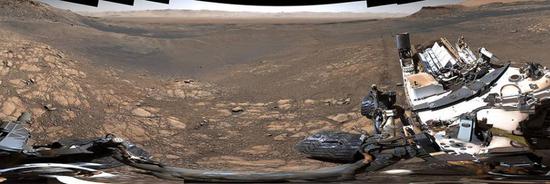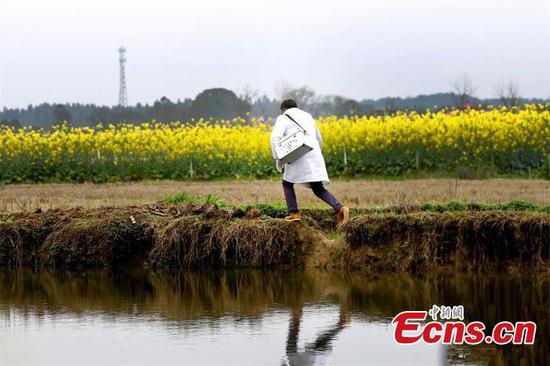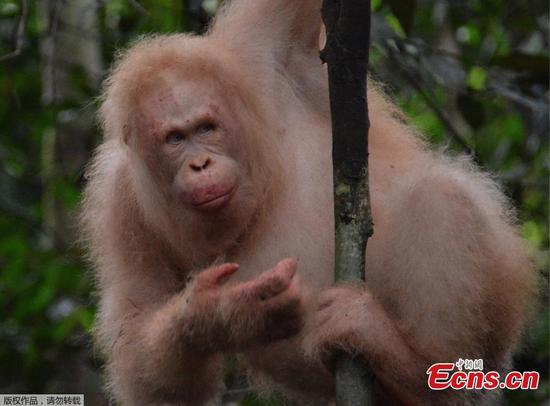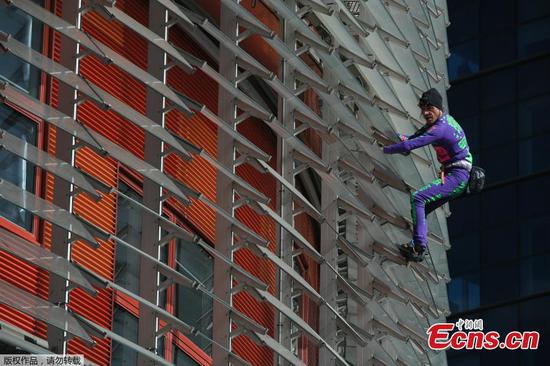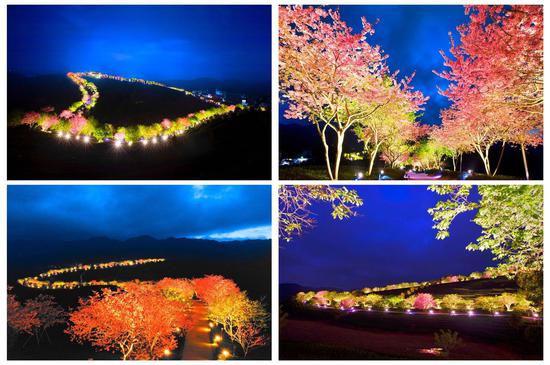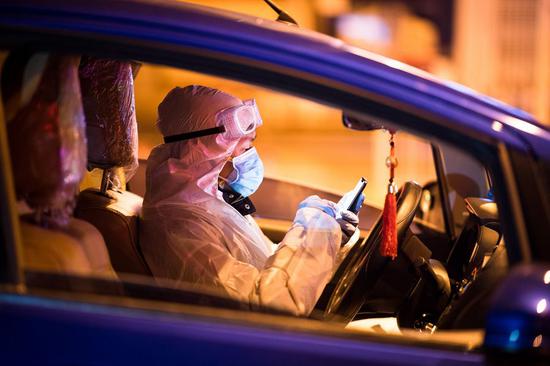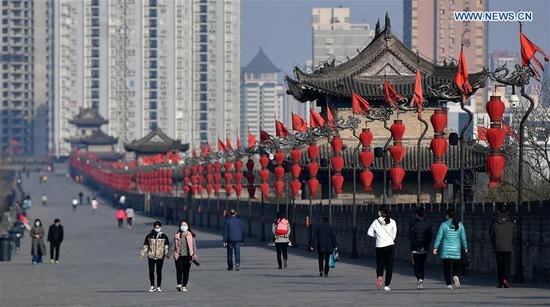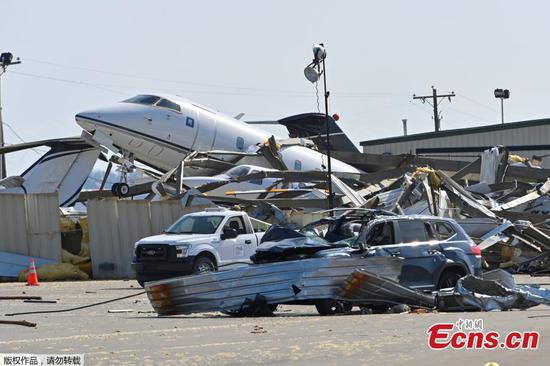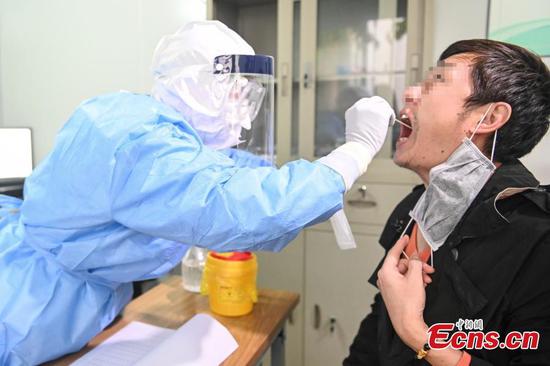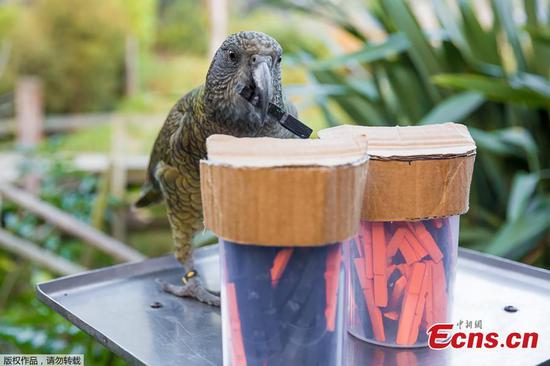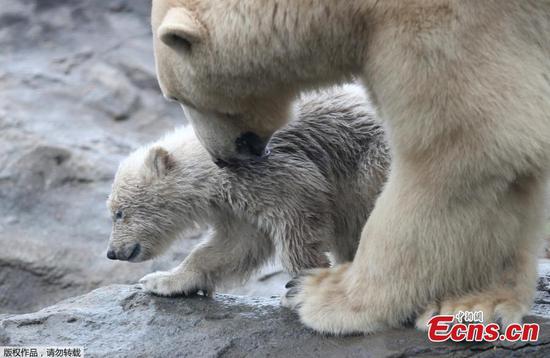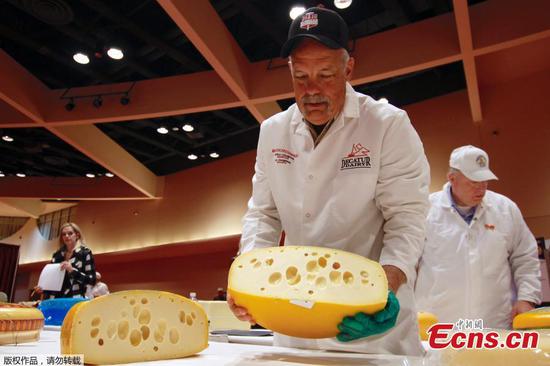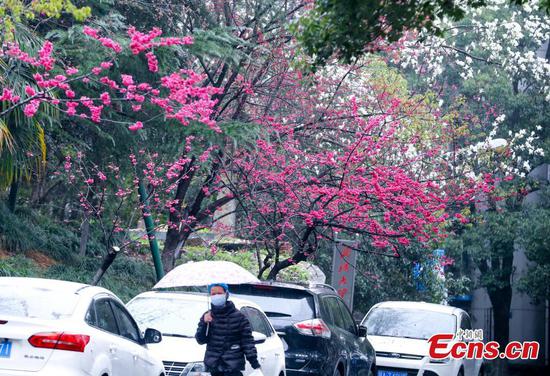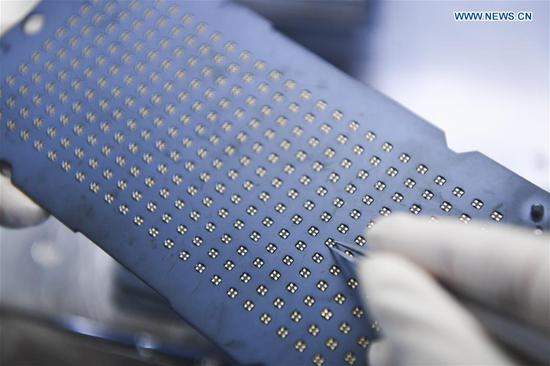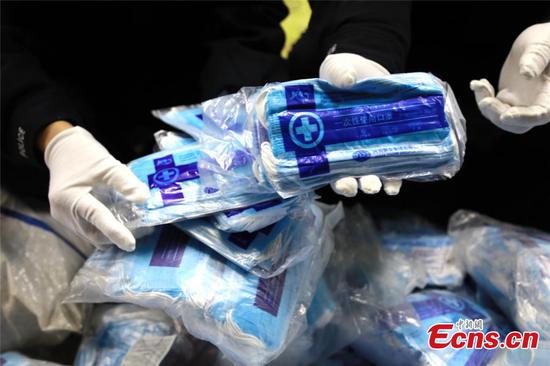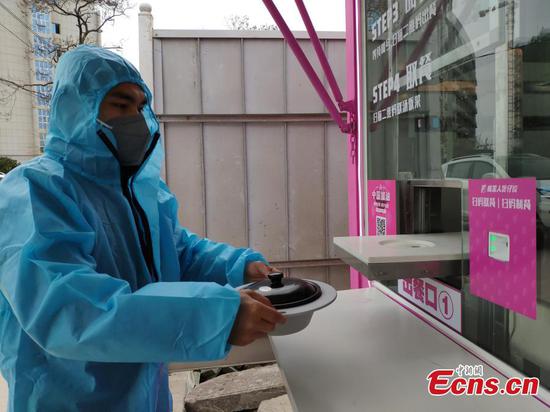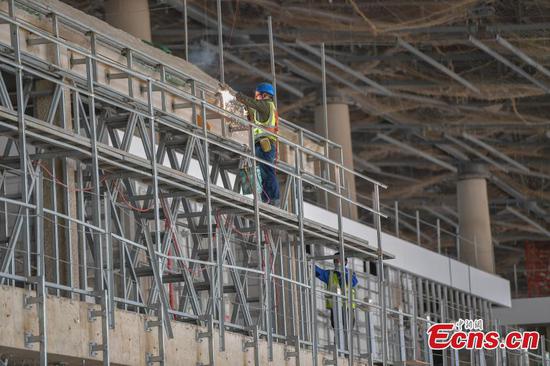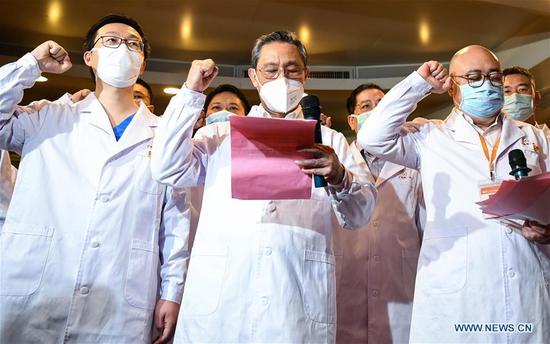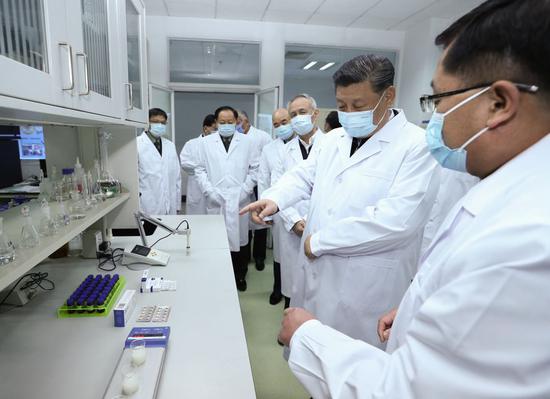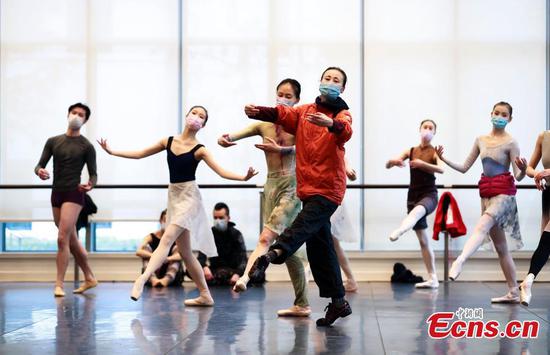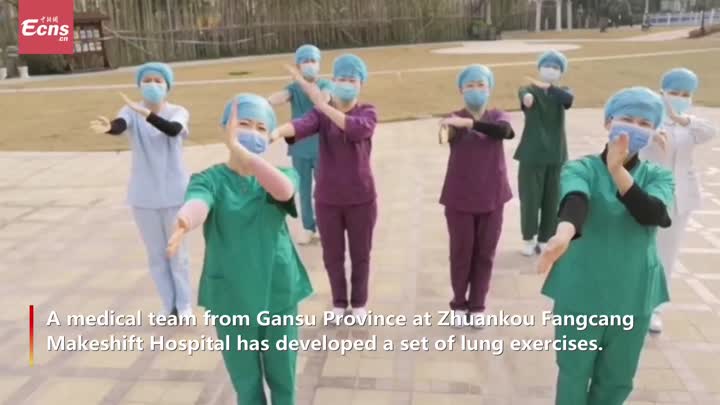
Supplies of traditional Chinese medicine are collected at a hospital pharmacy in Huazhou district, Weinan, Shaanxi province. [Photo/Xinhua]
On Jan 22, the National Health Commission released the third edition of a novel coronavirus pneumonia diagnosis and treatment plan, which included suggestions on prescribing TCM. Five days later, top health authorities issued the fourth revised version of the plan, adding specific TCM formulas and proportions.
The first group of eight patients treated with a combination of TCM and Western medicine was discharged from Jinyintan Hospital in Wuhan on Feb 3.
The central government held a group meeting 10 days later, which called for the integration of TCM and Western medicine to be strengthened to promote greater involvement of the former in the entire diagnosis and treatment process. It also urged that clinical trials of drugs be accelerated and that drugs be applied promptly to improve the recovery rate and to reduce deaths.
On Feb 14, 50 patients were admitted to a mobile hospital in Wuhan's Jiangxia district, the first such facility to start operating in the city.
"It is also the first hospital at which the medical staff are all from hospitals using TCM," Liu said.
The facility, which has been named Dahuashan, was transformed from a local outdoor sports center.
Headed by Zhang Boli, from the Chinese Academy of Engineering, 209 experts from top hospitals in Tianjin and Jiangsu, Henan, Hunan and Shaanxi provinces are working at the makeshift hospital. Liu and Wang Qinghua, the Party chief of Jiangxia district, are its executive directors.
"We want to use the characteristics and advantages of Chinese medicine to fully carry out some treatment and also integrate some modernized Western treatments. The priority is always to cure patients," Liu said.
While no special medicines and vaccines have been developed to treat the virus at present, Liu said TCM can prevent a patient's condition deteriorating, which is vital in winning the battle.
Zhang Boli said that in 2003, when he joined the fight against SARS, two TCM treatment areas were set up in Tianjin, which both achieved good results.
"This time, we are here to replicate the experience of Tianjin and give full play to the role of Chinese medicine in fighting the epidemic," he said.
"My inner clothing was completely soaked in sweat after I carried out checks at the hospital, but I felt very happy, as it meant the indoor temperature was more than 25 C, which is highly beneficial for patients 'recovery," he added.
TCM experts believe that humidity and cold can cause the virus to spread, so keeping warm is key to controlling the disease.
Liu said Chinese medics have adopted some Western treatment methods, including oxygen inhalation, to gain more time for patients to rebuild their immune system.
"The key to defeating the virus is still the patient. The principle of TCM treatment is to mobilize the patient's immunity and resistance through a variety of methods, not to eliminate the virus," he added.
The mobile hospital is also going to provide other treatment methods, such as tai chi and acupuncture, to improve patients' immunity.
"When the patients recover a little bit, the medical staff will start taking them to tai chi," Liu said, adding that performing this twice a day is effective in improving respiratory and cardiopulmonary functions.
Although the central government has constantly improved plans to tackle the virus, the rising number of confirmed cases caused people to worry and also made them more susceptible to accepting a range of unproven remedies.
On Jan 31, the Shanghai Institute of Materia Medica and Wuhan Institute of Virology, both subsidiaries of the Chinese Academy of Sciences, released research results showing that Shuanghuanglian, a formula comprising herbal extracts, can inhibit the virus. This over-the-counter herbal remedy is commonly used to treat a cold, cough, fever and sore throat.
When the research results were announced that evening, all Shuanghuanglian medicines on major e-commerce platforms sold out and long lines formed outside pharmacies during the night to buy supplies.










